Special Diets Posts
Admin Assistance: 7 Gluten-Free Whole Grains for Business Lunches (No Special Plate Required)
“Catering planner” probably isn’t in the job description of many administrative assistants, but in small to mid-sized companies, we all know it happens anyway. Business lunches, meeting snacks, group delivery orders, lunch-and-learns: there are plenty of occasions where an outside catering company isn’t required, but someone has to get food into the office! And anyone who has filled that role knows that planning meals for a group can be a juggling act — especially thanks to the proliferation of dietary restrictions in today’s culture.
Accommodating special requests (vegetarian/vegan/paleo/gluten-free/low-carb/you-name-it) can make the simple act of ordering lunch for your colleagues quite the complicated equation… especially if your company is zeroing in on workplace wellness and has guidelines for serving healthy meals in the office.
And focusing on healthy dining — usually described as containing whole grains, lean proteins, and vegetables — is an admirable goal, and one that many companies are adopting as part of a workplace nutrition policy. But what happens when an office nutrition goal conflicts with an employee’s dietary restriction?
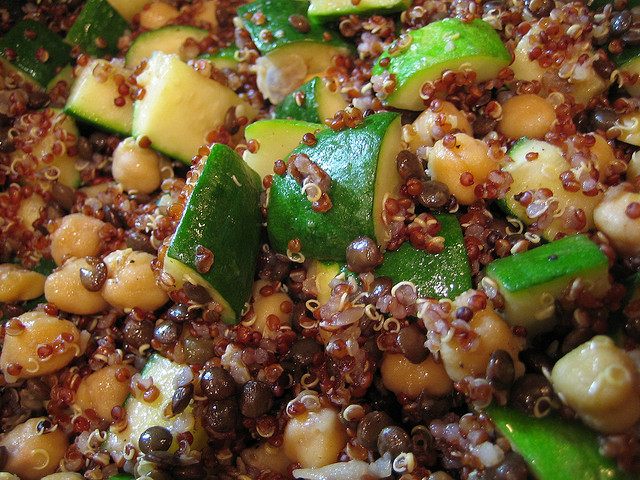
Image source: Flickr user MiramKato
The vegetarian won’t eat the lean protein, the low-carb dieter refuses to touch the whole grains… this is where the headaches begin for admin assistants trying to solve the puzzle. The good news is that you don’t necessarily have to plan special exceptions for every meal. It’s possible to reconcile many potential conflicts between nutrition goals and special requests — and today, we’re tackling the world of gluten-free diets and whole grains.
That’s right — even if your workplace wellness plan mandates that whole grains are served at business lunches or office meals, you can still provide a naturally gluten-free option that will fit everyone’s requirements. After all, “whole grain” doesn’t have to mean whole-wheat bread, and gluten-free doesn’t necessarily require special products. (One disclaimer: gluten hides in many unexpected places, so just check with your chosen restaurant or catering company to ensure the foods that should be naturally gluten-free haven’t had any extra wheat flour or gluten product added in.)
With that being said, consider these gluten-free whole grains, and how they can be a part of a wellness-minded office meal:
1) Buckwheat
Despite the name, buckwheat flour is naturally gluten-free, and used to make delicious, earthy Japanese noodles called soba. Served chilled in a salad or hot in a soup, buckwheat noodles are a fantastic addition to the lunch table.
2) Corn tortillas
The easiest way to get gluten-free whole grains on a Mexican menu? Skip the flour tortillas, and order corn instead.
3) Quinoa
No longer a quirk of Peruvian cuisine or health-food stores, quinoa has been embraced by mainstream restaurants and can be easily found on menus. It’s especially tasty added to salads, from a Southwestern-style black bean salad to leafy kale salads… and some restaurants may even offer gluten-free quinoa pasta dishes!
4) Steel-cut oats
Watch out for sneaky gluten in some varieties, but many of the better brands of oats and oatmeal (like Bob’s Red Mill) ensure their oats are gluten-free. For healthier catered office breakfast meetings, skip the toast and provide gluten-free oatmeal with dried fruit for a hearty, whole-grain start to the day.
5) Brown rice
From Chinese places to sushi spots to traditional American eateries, brown rice is one of the easiest gluten-free whole grains to find on restaurant menus. Order it instead of white rice (or instead of whole-wheat dinner rolls) to provide a healthy whole-grain side dish.
6) Polenta
Made from corn, certain kinds of polenta are whole-grain — and the hearty dish is a nice substitute for traditional pasta on an Italian menu.
7) Popcorn
Need a healthy, whole-grain, gluten-free meeting snack? You don’t have to go out searching for special crackers that half the attendees won’t touch — good, old-fashioned popcorn will do the trick beautifully!
Gluten-free business lunches don’t require a ton of special planning — just a little know-how and creativity (and, don’t forget, a few minutes of follow-up with every restaurant or vendor to ensure there aren’t sneaky gluten sources hiding in foods that don’t naturally contain them). And to make your life as a busy admin assistant even easier, the food delivery experts at Waiter.com offers online ordering, prompt delivery, and recurring meals from our Virtual Cafeteria Service!
7 Delicious Ideas for Paleo Food Delivery at the Office: Looking at Options Across Cuisines
The concept behind the Paleo diet is relatively simple: eat the food your ancestors ate. Fruits, veggies, lean meats, seafood, and nuts and seeds are all fair game, while grains, dairy, processed foods and sugar, beans, and starches are not. Unfortunately, while it’s straightforward to cook for a Paleo diet, dining out or ordering Paleo food delivery can be a little more complicated. Grains and sugars are practically essential items at most restaurants, which can make it hard for Paleo eaters to socialize during office meals or group takeout orders.
Hard, but not impossible! Here’s our guide to Paleo food delivery, so your dedication to eating like your ancestors doesn’t mean you have to stay holed up in your cave… er, office.
Basic Tips…
Don’t be afraid to make special requests! Ask for items to be prepared the way you want them, whether it’s having your vegetables sautéed in olive oil instead of canola or to have the croutons left off your salad. And don’t be shy about saying you’re on a gluten-free diet, even if that’s by choice instead of necessitated by allergy.
Our cuisine-specific suggestions here are broad ones, and every restaurant is different, so you may have to tailor your order accordingly depending on what you see on individual menus.
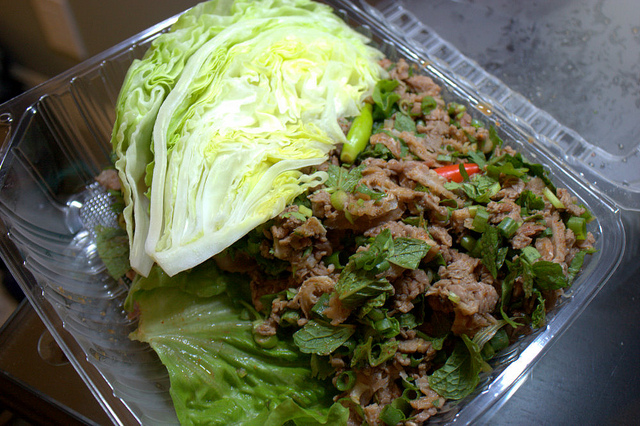
Image source: Flickr user Krista
Paleo-Friendly Dishes When Ordering…
Barbecue:
While Paleo dieters should be cautious when it comes to sugary barbecue sauces, ordering from the BBQ joint is a pretty easy way to get tasty Paleo food delivery. Order up a hefty portion of brisket or chicken and a side of collard greens for a hearty meal, and choose a Carolina-style vinegar-based sauce — it likely won’t be sugar-free, but it’s your best bet.
Thai:
Thanks to coconut milk-based curries, Thai takeout is a surprisingly Paleo-friendly option. Just skip the rice and ask for extra vegetables in your shrimp/chicken/salmon curry. For an appetizer, grab a chicken satay (but skip the side sauces, which are almost guaranteed to be loaded with sugar), a cup of Tom Ka Gai soup, or larb, which is basically a spicy meat salad!
Mediterranean/Greek:
Think skewers! Order up a few varieties of lamb/pork/seafood skewers and a green salad (hold the feta) from the local Greek spot.
Chinese:
Thanks to the MSG and gluten-laden sauces, Chinese takeout can be particularly tricky for Paleo eaters. Your best bet is to order a meat-and-veggies meal sauce-free, and keep a bottle of gluten-free soy sauce in the office fridge!
Mexican:
Fajitas are your friend! Pile up a plate with sizzling chicken and sautéed vegetables, top with guacamole, and give your tortillas to your coworker.
Sushi/Japanese:
It could get pricy, but stick to sashimi — simple, beautiful, Paleo-friendly slices of fresh fish. Supplement with a seaweed salad or a few skewers of grilled meat: chicken thighs, meatballs, beef, lamb, and mushrooms are all common finds on a yakitori menu. Again, skip the packets of gluten-laced Kikkoman and grab your bottle of Paleo-friendly soy sauce from the fridge.
Sandwich shop/deli:
This may be the trickiest, as bread is a big no-no within the Paleo diet. Some sandwich shops might offer lettuce wrap versions of their sandwiches, thanks to the low-carb craze from a few years back. Swap avocado for mayo on most menu items, and these wraps are a good bet; otherwise, stick with a salad with no croutons and a simple oil-and-vinegar dressing on the side.
Eating healthy doesn’t mean you have to eat alone! And as long as your plate is piled with vegetables and lean meats, you’ll be sticking fairly close to the principles of a Paleo diet. Find the perfect Paleo meal from the selection of menus (and prompt delivery) at Waiter.com!
Admin Assistance: From Snacks to Whole Grains, How to Plan Diabetic-Friendly Office Meals
It’s the sad truth that by now, more than eight percent — almost one in ten — Americans are diabetic… and 35 percent of us have a concerning condition called prediabetes, with elevated blood glucose levels that greatly increases the risk of developing full-blown diabetes within the next decade.

Image source: Flickr user Nate Grigg
So chances are, you have a diabetic or two in your office: a coworker who is trying to balance their diet and their insulin levels, and oftentimes their weight to maintain the healthiest lifestyle they can, all while navigating the office meals and business lunches that can undermine their best efforts. And it’s easy — so easy — to lend them a helping hand. Arranging workplace meals and lunches that are friendly to the diabetic lifestyle doesn’t mean serving a bowl of sugar-free candy and apologizing to everyone else. A few thoughtful choices and small extra steps can make office meals much more amenable to a diabetic diet.
Let’s review a disclaimer: every diabetic’s nutritional plan is likely a little different, based on their individual needs and doctor’s recommendations. Generally, though, these suggestions will help the vast majority of people managing diabetes to feel more comfortable and at ease at your workplace gatherings… and as an added bonus, they’re generally positive, healthy suggestions for all coworkers, diabetic or not.

Image source: Flickr user Anders Sandberg
Provide snacks
If you might be waiting on a manager or guest of honor, provide small bowls of healthy snacks so that coworkers who need to eat at certain intervals won’t worry about problematic changes in blood-glucose levels. Fiber-rich berries, small dishes of nuts, or hummus with sliced vegetables are all good options to have on hand.
Go low-carb
Carbohydrates tend to be the most important food group for diabetics to monitor, especially quickly-digesting ones like sugary snacks and white bread. You don’t need to exorcise all carbohydrates from the meal, but try to make them optional instead of incorporated into the main dish: think chicken parmesan (unbreaded) instead of pasta from the Italian restaurant, or beef-and-broccoli rather than fried rice from the Chinese place. Serve garlic bread or rice alongside for everyone else, but let diabetic coworkers easily avoid the carbs if they need to.
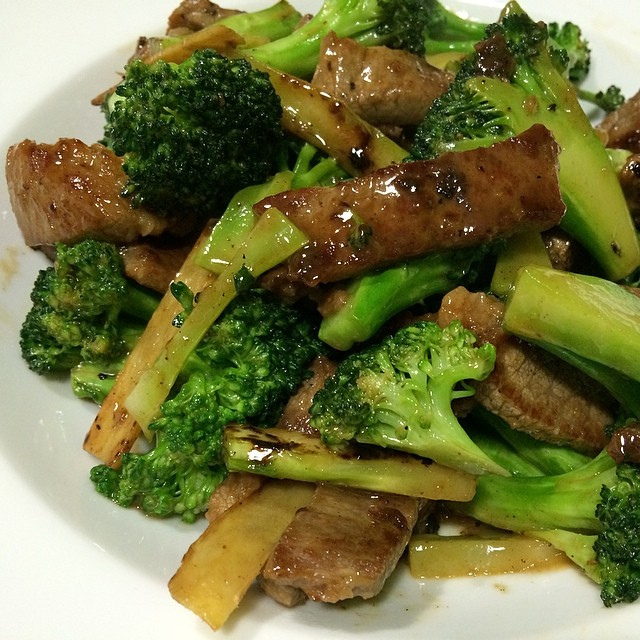
Image source: Flickr user Arnold Gatilao
When you must carb, order whole grains
And when carbs are provided, choose whole grains instead of refined white flour-based items when you can (sandwich bread, pizza crust, etc.). These kinds of carbohydrates are digested more slowly, which can help avoid sudden changes in blood glucose levels.
Provide information!
If possible, provide nutritional labels. Some diabetics have to estimate the number of carbohydrates in a meal and adjust their daily insulin intake accordingly. Make this easier by setting a small printout next to takeout items, and you’ll be their new best friend!
Healthy snacks, fewer carbohydrates, whole grains when necessary, nutritional info — all of these tips are not only helpful to diabetic coworkers, but to anyone who is trying to manage their weight and maintain a healthy diet! And with a huge range of menus and prompt delivery available from Waiter.com, we can help ensure the office meals you order are healthy, fresh, and right on time.
The Top 4 Plant-Based Proteins for Meatless Office Meals (No Tofu Necessary)
By now, it’s old news that most nutritionists, doctors, and environmental activists think we should eat less meat. Meatless Monday is a widespread success. A simple quote from Michael Pollan (“Eat food. Not too much. Mostly plants.”) now graces reusable shopping bags and meme-ready illustrations. And one environmental group has painstakingly compiled statistics to describe just how terrible mass-produced meat is for the environment, like “If your four-person family skips steak once a week, it’s like taking your car off the road for nearly three months.”
And, of course, seemingly endless studies continue to reveal that plant-based diets are the best for our weight, blood pressure, and even our longevity. We get it — we should eat less meat. But what do we eat instead… especially when it comes to ordering takeout, planning a catering menu, or arranging office meals?
The tricky part of trying to serve more vegetarian cuisine in the office is to make sure every meal has plenty of protein… without resorting to hockey-puck-like veggie burgers or highly processed fake meats that would never qualify as “real food”. And luckily, you don’t have to. Whether you’re trying to accommodate a special diet at a catered meal or trying out Meatless Monday during a group takeout order, there are plenty of delicious, wholesome, plant-based proteins to make sure every breakfast or lunch will be just as satisfying as a meat-centric meal. Here are seven plant-based proteins to try:
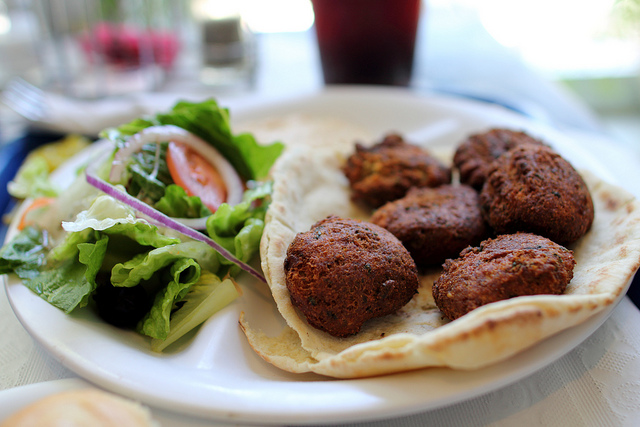
Image source: Flickr user Mr.TinDC
Chickpeas
When it comes to satisfying, meatless dishes, look no further than chickpeas (also called garbanzo beans). A cup of cooked chickpeas contains 15 grams of protein, or around a third of the daily recommended amount for a typical diet. From falafel to channa masala to hummus, chickpeas are easy to find on many Mediterranean and Indian takeout menus.
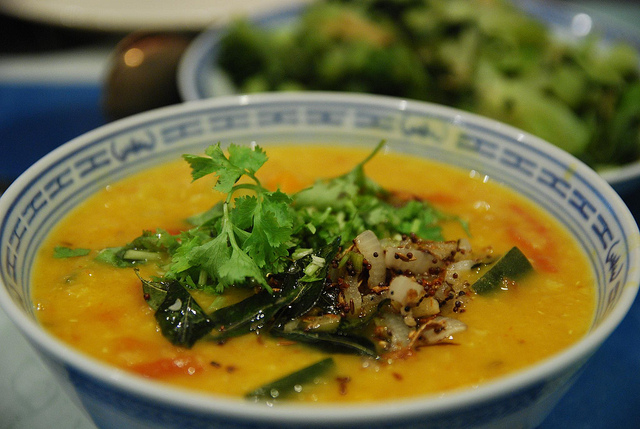
Image source: Flickr user Alpha
Lentils
Packed with protein (18 grams per cup), lentils are another staple of Indian cuisine, where they’re found in nearly endless varieties of dishes known as dal. Many restaurants and caterers will also serve hearty lentil soups or warm lentil-based salads, and lentils are also found in many of the better housemade veggie burgers, along with a host of other uses in the hands of creative chefs or caterers.
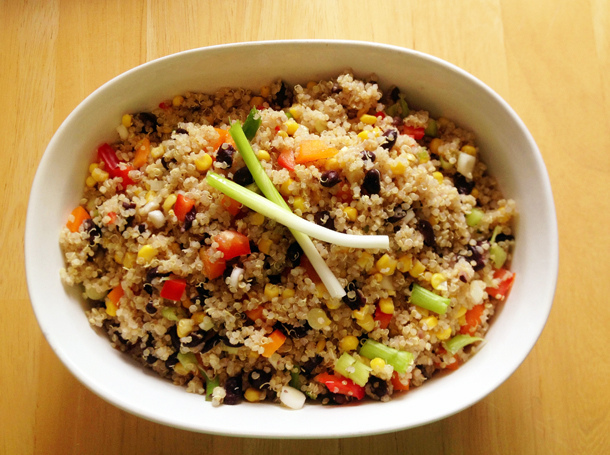
Image source: Flickr user Amorette Dye
Quinoa
Quinoa is famously known to vegetarians as a “complete protein” (that is, it contains all nine of the essential amino acids that our bodies can’t produce, and so must obtain through food). While flexitarians won’t need to worry as much about complete proteins, quinoa (pronounced “keen-wah” and technically a seed, not a grain) remains one of the heartiest plant-based proteins. Many restaurant chefs have embraced quinoa, and it’s most often seen on menus, starring in meatless salads.

Image source: Flickr user Jackie Newgent
Black beans
When it comes to Mexican food, it’s almost too easy to go meatless thanks to ubiquitous (and delicious) black beans, which offer 15 grams of protein per cup! Burritos, quesadillas, and tacos can almost always be ordered with beans and rice — we prefer black, since pinto are frequently cooked with pork fat — and a healthy scoop of guacamole adds a creamy texture and heart-healthy monounsaturated fat that makes meat besides the point. Black beans are also frequently used in vegetarian chili, perfect for office meals on wintry days!
You’ll notice that many of the suggested dishes aren’t typical American fare. Be prepared to rely on cuisines like Indian, Mexican, and Mediterranean when trying to order vegetarian-friendly food; you might even consider hosting a lunch-and-learn to promote cross-cultural learning as part of the experience. Whatever the occasion, you’ll be able to find a wide range of meatless menu items available for prompt delivery at Waiter.com!
Corporate Catering Trend Alert: Pasta is Going Gluten-Free
If you attend (or plan) a lot of business lunches or all-day conferences, chances are good you’re an accidental expert on catering trends. Pomegranates. Acai berries. Korean fusion tacos. Fancy cupcakes. Cake pops. Bacon in/around/baked into everything. And now, you might be encountering a new corporate catering trend at business meetings or during your menu planning: wheat-free pastas.
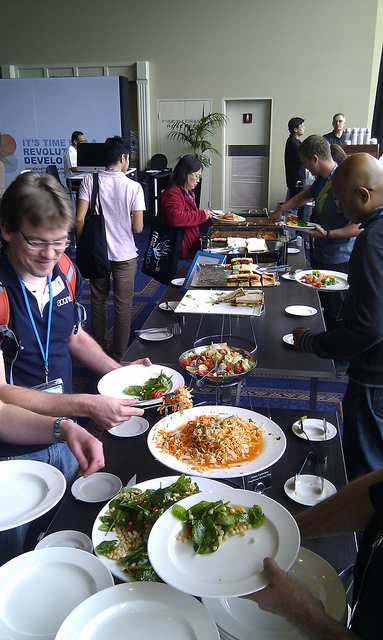
Image source: Flickr user Alpha
Don’t tell your Italian grandmother, but it’s true. Thanks to the skyrocketing popularity of gluten-free diets, pastas made without wheat are becoming downright ubiquitous on restaurant and catering menus. While some people must avoid gluten (a protein found in certain grains, including wheat, rye, and barley) due to celiac disease, most estimates show that celiac suffers are less than 1% of the population. Many more claim that going gluten-free helps alleviate digestive problems; still others are giving up gluten as part of a weight-loss plan. While nutrition and health experts are divided regarding whether gluten-free diets are actually useful for those without celiac disease, it doesn’t seem to make much of a difference. Americans want to buy and eat gluten-free foods, and are literally paying billions of dollars to do so.
It only makes sense that corporate catering would make an effort to, well, cater to this demand. And while there are plenty of opportunities, given that pastas are a catered-lunch staple, it explains the new prevalence of wheat-free varieties showing up in conference rooms across the country. Whether you help plan and organize office meals or just eat them, here’s a basic rundown on what exactly you’ll be encountering when it comes to gluten-free pastas:
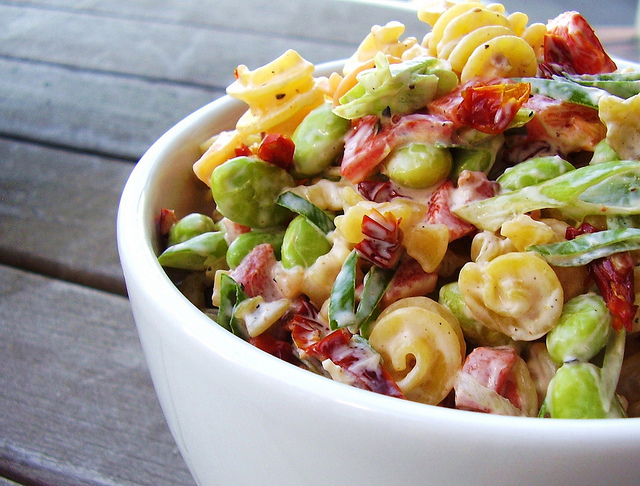
Image source: Flickr user Jackie Newgent
Talk about a one-two punch when it comes to trends: one of the most popular varieties of wheat-free pastas are being made from quinoa, an ancient grain that’s recently been experiencing a resurgence in its own right. Quinoa flour can be used in all kinds of pasta, from spaghetti to elbows to fusilli. While the texture is noticeably different from traditional pasta, quinoa pastas do have the advantage when it comes to nutrition: they offer substantial servings of protein and iron.
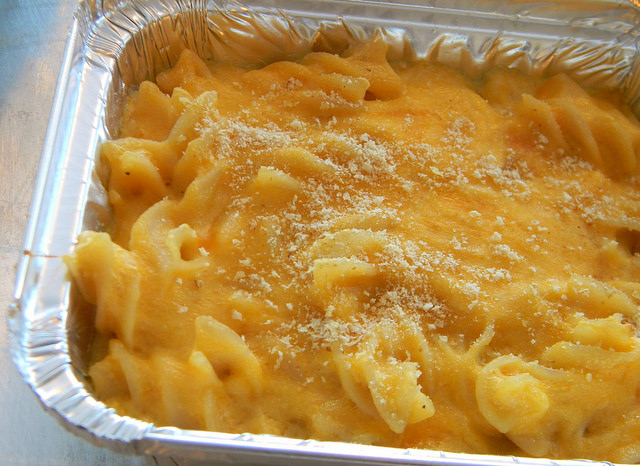
Image source: Flickr user Sarah R
Brown rice pasta might sound weird, but it’s supposedly more forgiving during the cooking process than other gluten-free pastas. The downside? Many taste-testers affirm that both the texture and the flavor of brown rice pastas can be off-putting.
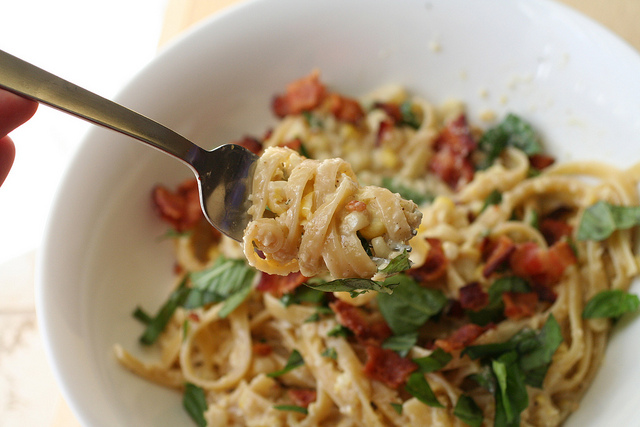
Image source: Flickr user Whitney
The same taste-testers who didn’t particularly enjoy brown rice pastas found corn pastas to be a much preferable alternative. One of the most frequently used gluten-free pastas, corn-based noodles almost seem like a no-brainer: after all, corn is in practically everything these days!

Image source: Flickr user Anna
Noodles have been made with gluten-free ingredients like buckwheat (which, counterintuitively, contains no wheat) for centuries — but only in Asia, not Italy. Buckwheat noodles, often called soba, are earthier than traditional pastas, but also contain a hearty dose of fiber. Buckwheat noodles are particularly well-suited for cold pasta dishes, but can be served warm as well.
So should you consider gluten-free pasta a passing trend or a healthy alternative to the traditional, gluten-filled varieties? In the end, if you’re planning a corporate catering order for your office, that question isn’t as important as whether your colleagues or employees want it provided. Honoring dietary preferences is key to ensuring every employee feels included and valued during office meals… and happily, unlike bacon or cupcakes or bacon-wrapped cupcakes, you can serve up quinoa pasta or buckwheat noodles without compromising on employee wellness!
When it’s time to arrange for corporate catering or just a laid-back office lunch, you’ll find all kinds of options available at Waiter.com — from gluten-free food delivery to mainstays like Chinese takeout or pizzas!
4 Tips to Help You Avoid the Secret Sugar in Your Everyday Office Meals
Want to cut back on sugar? Good for you! Research shows that’s one of the best moves you can make to reduce your risk for chronic diseases like obesity and heart disease, as well as maintaining good mental health and cognitive abilities.
The bad news? Sugar is insidious. Reducing your sugar consumption to nutritionist-approved levels doesn’t just mean avoiding cupcakes in the break room or skipping your afternoon soda — sugar is everywhere in our daily diets, from ostensibly healthy breakfast foods to takeout lunches that we would never think of as sweets. Worst of all, since sugar adds flavor without fat, many so-called “diet foods” are actually higher in sugar than their less-processed counterparts.

Image source: Flickr user StolenGolem
Still, cutting out sugar is a very worthwhile goal, and one that can be easily met once you know where to look for the sweet stuff. And there may be no better place to start than by examining what you eat at the office every day: making small changes to your daily routine can add up to a big difference in the amount of sugar you eat.
With that in mind, here just a few tips to reduce your unconscious sugar consumption during office meals:
While everyone else that piled onto the lunchtime takeout order is chowing down on oversized sandwiches and chips, you’re smugly snacking on a green salad with grilled chicken… but, it’s almost a guarantee that your fat-free dressing is loaded with sugar. At Au Bon Pain, for instance, two ounces of fat-free raspberry vinaigrette has 12 grams of sugar (twice as much as their regular balsamic vinaigrette, and six times more than bleu cheese). Order the real stuff, and use a little less; since it tastes richer and is more satisfying, you won’t need as much.
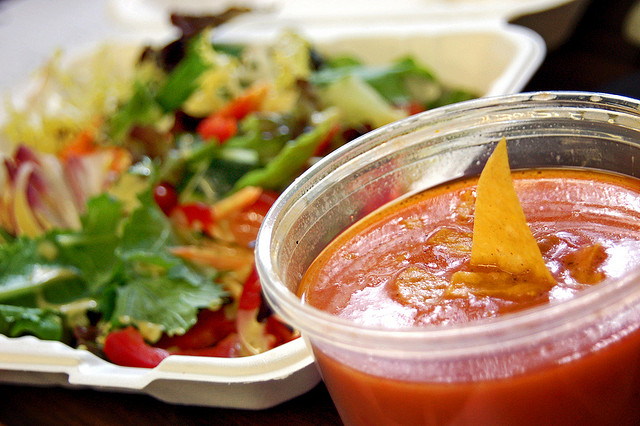
Image source: Flickr user Matt de Turck
When you head into an catered office breakfast meeting, you may think that grabbing a container of yogurt instead of a donut is a smart, sugar-conscious move. Unfortunately, if that yogurt is fruit-flavored, you’re wrong. While all yogurts will contain some milk-based sugars (lactose), the fruit-flavored kinds tend to include lots of added sugars from fruit flavors. Just for example, Yoplait’s strawberry-banana yogurt has 26 grams of sugar — while your standard glazed Krispy Kreme donut has 10 grams. Instead, lobby the meeting planner for plain yogurt (especially high-protein Greek yogurt) and a bowl of actual sliced strawberries to mix in yourself.
We may associate Chinese takeout with lots of salt, but some dishes include copious amounts of sugar — so beware of the shiny, glazed sauces found in orange chicken, General Tso’s, and sweet-and-sour (OK, maybe that last one shouldn’t come as a surprise). An order of orange chicken, for example, can pack in as much as 88 grams of sugar. Instead, choose a healthier Chinese takeout dish like beef and broccoli, which is still delicious despite its lack of a sticky sauce.
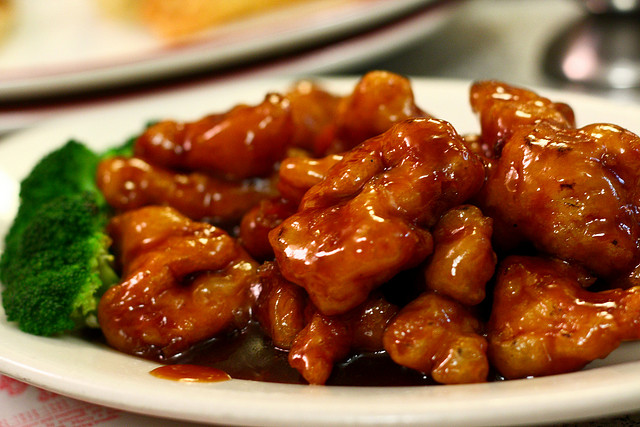
Image source: Flickr user Kate Sumbler
The most dangerous source of sugar in your diet? It’s what you drink. At Subway, you could literally eat five sugar cookies and still not consume the amount of sugar in a 21-ounce fountain Coke — and that’s far from the largest beverage size. Healthy-sounding drinks can fill your cup with sugar, too: a low-fat wild berry smoothie at Panera Bread has 68 grams of sugar, more than twice of what you’ll get in a grande iced caramel macchiato from Starbucks. Whether alongside your lunch order or as part of an afternoon coffee break, the beverages you sip at work can really rack up your sugar consumption. And since some evidence has shown that drinking diet soft drinks can lead to higher calorie consumption in general, don’t just ditch regular Coke for the kind full of fake sugar: make the more drastic switch to unsweetened iced tea, or even water with a generous slice of lemon.
Even when you want to cut back on sugar, you don’t need to cut back on variety or flavor. With a wide range of menus and easy online ordering, the food delivery experts at Waiter.com can help you find delicious yet wholesome office meals and snacks to make your workplace happier and healthier every day!
Admin Assistance: How to Cater to Gluten-Free Diets in the Office
If you’re an administrative assistant in charge of ordering workplace meals, then you are probably more familiar with your coworkers’ diet habits than anyone else in the office! You’re the first one to know when a colleague decides to try out a low-carb diet, you can name every vegetarian, and you even know which middle manager is just a plain, old picky eater. It’s your job to ensure that every member of the staff can benefit from the motivation, personal relationship growth, and employee appreciation that’s served up alongside the actual food on the lunch table!
In recent years, however, one dietary “trend” has presented a unique opportunity for admin assistants: gluten-free diets. If you have gluten-free coworkers in your office, you may be asking how, exactly, you can create a gluten-free meal plan for the entire office?

Image source: flickr user JuditK
What is gluten?
Let’s start with the basics: gluten is a kind of storage protein found in wheat, rye, and barley, along with a handful of other grains (spelt, farro, and triticale). Gluten is what lends texture to pizza dough, bread, and baked goods, and is used as a thickener in all kinds of sauces, soups, and salad dressings. People following gluten-free diets know that even if an item contains no wheat but lists a vague ingredient like “natural flavoring”, there’s a good chance it contains gluten.
Celiac disease vs. gluten sensitivity
If one of your coworkers has celiac disease, then they absolutely cannot eat gluten or any food that may have been exposed to gluten. Their bodies perceive gluten as a threat to the immune system when eaten, and the immune system responds by attacking the gluten. This attack can ravage the small intestine, leading to gastrointestinal pain and long-term consequences like anemia and osteoporosis. Untreated celiac disease can be deadly, and the only treatment is to avoid gluten entirely. As one woman with celiac puts described in an interview with Pennsylvania State University, “… I can’t even dip mayonnaise out of a jar at someone else’s home or use their butter due to the risk of contamination from bread particles.”
Celiac disease affects about 1 in every 133 people, and if one of your colleagues has it, they are probably used to bringing their own food or avoiding many restaurants due to the severity of the consequences if they accidentally ingest gluten (for instance, even if a restaurant has a gluten-free menu, if they use the same cooking surfaces for all the food, it’s dangerous to a celiac sufferer). However, many more Americans have decided to forego gluten in their diets due to a gluten sensitivity (meaning they experience uncomfortable but not life-threatening bloating, diarrhea, and stomach cramps) — or as a weight-loss strategy, especially as gluten-free diets have become increasingly popular with celebrities and fitness gurus. If this is the motivation behind your coworker’s decision to go gluten-free, they will probably still feel comfortable participating in office lunches or parties and will look for some gluten-free options to fit their diet.
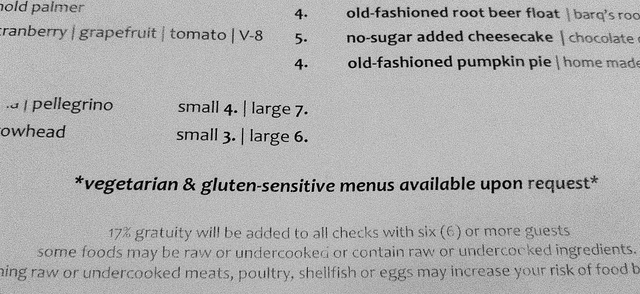
Image source: flickr user Deirdre Saoirse Moen
Planning a gluten-free meal
Luckily, as gluten-free diets have become more popular, so have gluten-free restaurant menus, packaged foods, and catering options. Here are a few ways to plan a gluten-free meal and avoid the “hidden gluten” ingredients that might otherwise derail your good intentions:
Salads: Fruits, vegetables, and lean meats are all excellent gluten-free foods, but many restaurant salads are sprinkled with gluten-containing croutons and dressings. Order any salads without croutons, ask for the dressing on the side, and keep a few bottles of gluten-free dressing in the office fridge.
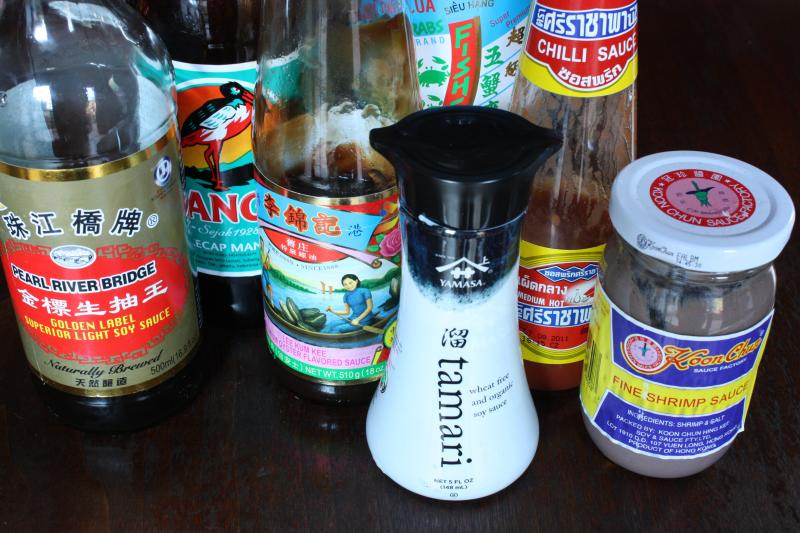
Image source: flickr user Andrea_Nguyen
Ethnic cuisine: Ordering rice instead of noodles may seem like the obvious choice to avoid gluten, but keep in mind that nearly all sauces used in Chinese restaurant (soy, hoisin, and oyster included) contain gluten. Skip Chinese, unless you know of a trusted restaurant with a gluten-free menu (like P.F. Chang’s). Gluten-free diners report having better luck with Indian food, where most of the staple ingredients (vegetables, chickpeas, spices, and meats) fit into a gluten-free meal plan.
Beer: If you’re in charge of planning an in-office happy hour, don’t forget that barley, one of beer’s key ingredients, contains plenty of gluten. There are some gluten-free beers available, but it might take a little extra legwork to track them down. Most wine, however, is gluten-free.

Image source: flickr user justmakeit
Fish & meat: The good news is that fish and meat is naturally gluten-free. The bad news is when that innocent chicken breast is breaded or even marinated, it’s likely come in contact with gluten. When ordering from a restaurant or caterer, specify that you would just like the meat cooked without breading or marinades.
Pasta: Unless otherwise labelled, pasta contains gluten, whether it’s made from whole wheat, semolina, or durum flour. Order a rice-based dish instead.
When it comes to choosing gluten-free menu items, all the information available at Waiter.com makes it easy to determine which restaurants are your best bet! Don’t leave any of your coworkers out in the gluten-free cold; a little advance planning and help from our easy online ordering makes it easy to include everyone in the office.
Office Lunches: How Administrative Assistants Can Order Approachable Ethnic Cuisine
Administrative assistants know all too well that it can be difficult to order lunch for a large group of people, especially on a regular basis. It can be challenging to suit a wide range of tastebuds without ordering the same meals over and over again. If your office is stuck in a sandwich-and-salad rut and your coworkers are looking to you for inspiration, it’s tempting to switch it up and order in from an Indian restaurant or arrange for a sushi bar for a little variety… but a few picky eaters can make it tough for you to provide variety while pleasing everyone.

Image source: flickr user matt.hintsa
And you do want to please everyone — as the research shows, engaging employees through office lunches and spontaneous celebrations is a wonderful way to show appreciation and bolster morale. If you’re ordering in food that a few employees don’t want to eat, that positive message quickly becomes a negative one: we care enough to provide a meal, but not enough to make sure it’s one you want to eat. Picky eaters in the office can feel left out, neglected, and in the worst cases, stigmatized or even bullied by more adventurous eaters – not something you want on your watch!
It is possible to provide a variety of cuisine without alienating any member of the team. Just like when catering to a vegetarian or gluten-free diet, it just takes a little advance work. If you know which employees tend to be more selective, ask ahead of time if there are certain flavors or ingredients they dislike and take that into account. Trying new foods still might be a challenge, but at least they’ll know you put some effort into choosing items they will be more likely to enjoy.
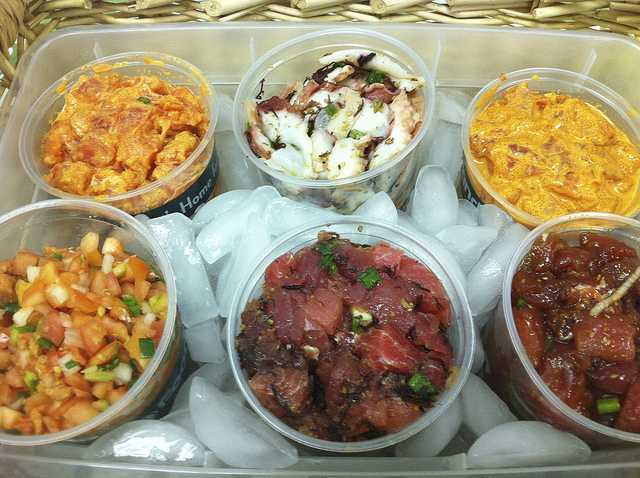
Image source: flickr user hawaii
Once you have some individual preferences in mind, choose from the following dishes when you order Indian, Thai, Japanese, or even Chinese food: they’re all considered to be less intimidating and beginner-friendly options for their respective cuisines. They may not be the most authentic choices, but none are very spicy, and they’re more likely to please a picky eater.
Indian food has a reputation for being too spicy for many people, but there are plenty of delicious dishes with barely a hint of heat. Some items to order: samosas (crispy pockets of dough stuffed with vegetables like peas, potatoes, or onions); tandoori chicken (brightly colored but rarely spicy roasted chicken); chana masala (chickpeas stewed with tomatoes, onions, and rich, savory spices).
Thai food can daunt first-timers with its exotic flavors (like lemongrass or Thai chiles), but choose the following dishes for more familiar sweet and nutty flavors: pad Thai (noodles, crushed peanuts, egg, a barely-sweet sauce); chicken satay (skewers of chicken served with a peanut sauce); cucumber salad; massaman curry (milder and sweeter than most other curries).
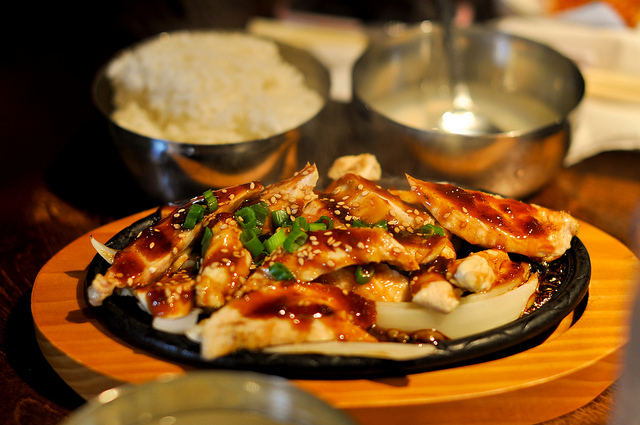
Image source: flickr user powerplantop
Japanese is so much more than sushi: newcomers can try udon (a soup with thick noodles and a savory broth); gyoza (pan-fried dumplings often filled with pork and cabbage); teriyaki chicken (marinated chicken broiled or grilled, served with a sweet and accessible sauce).
Chinese might be the easiest food to order for picky eaters, as there are plenty of Americanized dishes to please all kinds of palates: fried rice (rice stir-fried with diced vegetables and egg, meat optional); sweet & sour chicken or pork (crispy meat in a sweet sauce with pineapple); beef with green peppers.
If you’re an admin assistant trying to please a crowd, Waiter.com can help ensure that you have a wide variety of dishes. Easy online ordering and our Virtual Cafeteria Service make it a breeze to offer variety and avoid the office lunch rut while still keeping your coworkers happy!
Considerate Office Catering for Special Diets: How to Accommodate Employees’ Needs
Over 25 million Americans have diabetes — that’s more than 8 percent (and the number’s rising). 15 million have a food allergy of some kind. 1 percent of the population suffers from the severe gluten intolerance known as celiac disease, while nearly a third of all Americans report that a gluten-free diet appeals to them.
Especially in January, during the height of diet season, it may seem like no one in the office is going to be up for a cheesy slice of pepperoni pizza!
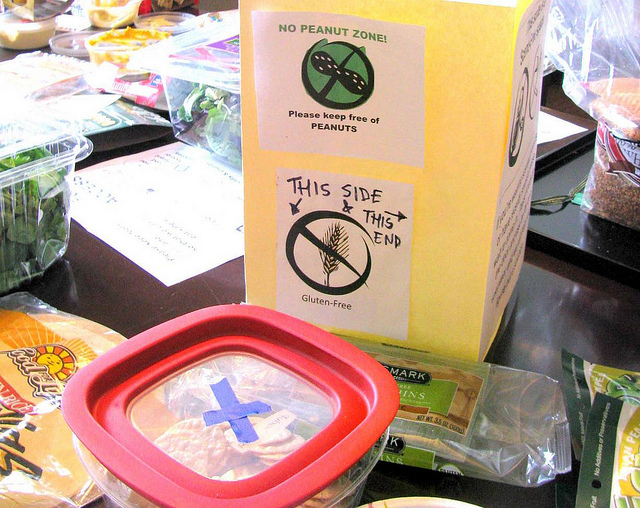
Image source: flickr user Transguyjay
With the numbers of food sensitivities and diabetes on the rise, along with costly chronic diseases like obesity and heart disease, every workplace has to determine for themselves the lengths they will go to in order to accommodate special diets (although certain requirements under the Americans With Disabilities Act must be met by all employers). It may be well worth the extra effort, as employees with restricted diets will feel more involved and engaged in company culture when they are able to fully participate in office parties and business lunches.
As an added bonus, providing more wholesome, health-conscious options (and saving pizza for a special occasion rather than a weekly routine) will also help improve the diet of the entire office, which can directly lead to a happier, more productive workforce. Employers should be a cheerleader for employee wellness and support healthy diets, and avoid living up to the typical office’s more common reputation as a threat to weight loss goals.
In many cases, the office manager or admin in charge of catering and meal planning will need to become well-educated and creative in order to accommodate special diets in the workplace. Here are a few tips on how to approach different dietary needs that may arise:
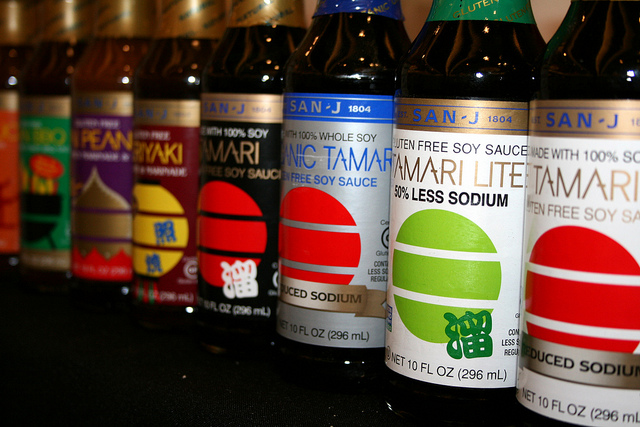
Image source: flickr user Gluten Free Allergen Free Expo
Gluten-free
One of the fastest-growing food trends is gluten-free food. While there’s a significant difference between suffering from potentially deadly celiac disease and simply following Miley Cyrus’s gluten-free example, the reality is that many Americans are finding that avoiding gluten (a protein found in wheat, barley, and rye) helps them lose weight and generally feel better. One easy way to accommodate gluten-free diets? Rather than ordering special gluten-free pizza crusts or a few sandwiches with gluten-free bread, add a few hearty entree salads (free of croutons) to the pizza or deli order. All vegetables, fruits, meats, and seafood are gluten-free (unless they’re breaded and fried), as well as rice, corn, and quinoa. Make a few key swaps like corn tortillas instead of flour from the Mexican place, and ask for gluten-free soy sauce from your favorite Chinese restaurant (or just keep a bottle on hand in the office fridge for those who prefer it).
Food Allergies
When it comes to employees with food allergies, communication is usually the key. Employees with food allergies have likely been making special requests and alternate arrangements their entire lives, and will appreciate feeling that their coworker in charge of catering is their ally! Ask the employee privately if they have trusted restaurants with dishes they know are safe, and make a point to order from those establishments frequently. When you can’t (for instance, the boss wants his favorite pizza to celebrate a special project’s completion or the staff’s requested Mexican food on Cinco de Mayo), share the menu with the employee ahead of time so you can plan together.
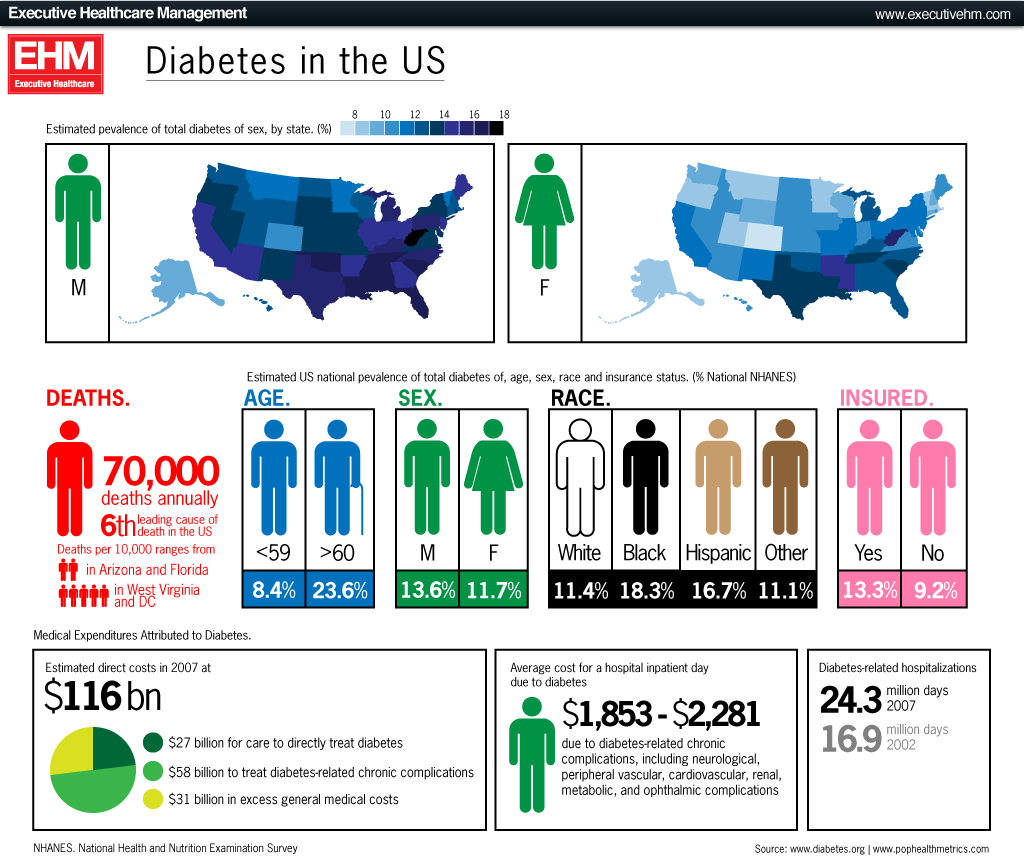
Image source: flickr user GDS Infographics
Diabetes
As diabetes has become increasingly common (with nearly one in ten Americans suffering from the disease), so has diabetes stigma — many may view diabetes as a consequence of poor lifestyle choices rather than an illness. Diabetics may not feel comfortable discussing their situation openly in the office or want it spread around the break room, but luckily, there are easy ways to adjust an office catering menu to include diabetic-friendly foods. The chief concern is usually carbohydrates: many people with diabetes carefully count and manage their carb intake, which can quickly break down into glucose during digestion, causing a spike in insulin levels. Order plenty of non-starchy vegetables (like spinach or broccoli instead of potatoes), lean proteins like chicken or fish, and nutrient-dense carbohydrates like whole grains rather than the processed or refined carbs found in sweets and white bread. When there’s a birthday party or other dessert-focused occasion, portion out some smaller serving sizes so diabetic coworkers can participate without exceeding their daily dietary limits of sugar and simple carbohydrates.
With a few adjustments to the office catering routine, the entire workplace can benefit from the healthy, often vegetable-focused foods that many special diets require. With customized online ordering and a wide variety of restaurants to choose from, Waiter.com can help ensure every member of your team has a safe, healthy, wholesome meal to enjoy in the workplace!